So you’ve heard of NFTs but aren’t sure what they look like?
Or perhaps you’re looking for ideas and inspiration for your own NFT project?
Well, fear not, because we’ve put together the ultimate list of the top 10 examples of NFTs in 2022.
And unlike many of the other lists, you’ll find online, we’ve grouped them into different categories rather than just putting together a list of arbitrary examples of non-fungible tokens.
In this guide, you’ll learn about the different types of NFTs that have been created and how they all differ from each other.
Because let’s get one thing straight: There is no such thing as a “model” NFT. The possibilities of NFTs are endless, which is why there are so many different examples of NFTs.
But let’s not waste time and dive into our list of the top 10 examples of NFTs.
Last Updated on: December 16th, 2025Table of Contents
Key Points (tl;dr)
- The NFT market has been growing exponentially in the past 2 years.
- Most of the stories about NFTs that make the headlines involve digital images of avatars which have been sold for millions of dollars.
- This has created a massive misconception of what NFTs are and how they could add value to our daily lives.
- We’ve put together a list of 10 major categories of NFT examples so you can gain a better understanding of what they are and what they could be.
Like this content? Then share it!
The Top 10 Examples of NFTs in 2023
www.tokenizedhq.com
Here’s the answer. Great article by @ChrisHeidorn right here: https://tokenizedhq.com/examples-of-nfts/
What Is an NFT?
NFTs are unique and tamper-proof digital assets that live on the blockchain and are used to prove ownership and authenticity. They can easily be sold and transferred from one wallet to another. Unlike regular crypto tokens, which are fungible, each NFT is unique and can have a different market value.
Before we get into the different categories of NFTs and share some NFT samples with you, let’s get some basics out of the way.
NFT stands for “non-fungible token” and basically means that each token is uniquely identifiable and unlike any other.
This is fundamentally different from cryptocurrency tokens or coins which are fungible by design.
In other words, it doesn’t matter which Bitcoin you have because they are all the same and have the same value.
With NFTs, it’s different because each token of a given collection can have a different market value.
That is why NFTs have also changed the way we think about ownership.
NFTs are new blockchain-based means to proving ownership and authenticity.
At this stage, it’s unclear how quickly NFTs will find broad adoption, but looking at the early adopters, it’s absolutely certain that there will be tons of innovation.
So let’s take a closer look at the top 10 examples of NFTs and how they may change the future.
10 Great Examples of NFTs
Some of the most common examples of NFTs include the following major categories, ranging from art to real-life utility:
- NFTs by Digital Artists
- NFTs as Interactive Art
- NFTs of Physical Artwork
- NFTs as Online Avatars
- NFTs of Moments in Time
- NFTs of Gaming Items
- NFTs of Metaverse Real Estate
- NFTs of Metaverse Fashion & Items
- NFTs as Access Tokens
- NFTs as Digital Certificates
The following list of examples of non-fungible tokens (NFT) is not exhaustive.
So much innovation is happening in the NFT space that it’s impossible to cover all of the different ways in which NFTs are being used.
Nevertheless, we believe that we’ve put together the best list of various different examples of NFTs that the internet has to offer right now.
1. NFTs by Digital Artists
NFTs by digital artists are a new form of art. They can be used to represent ownership of digital artwork and can easily be traded or shared with art galleries.
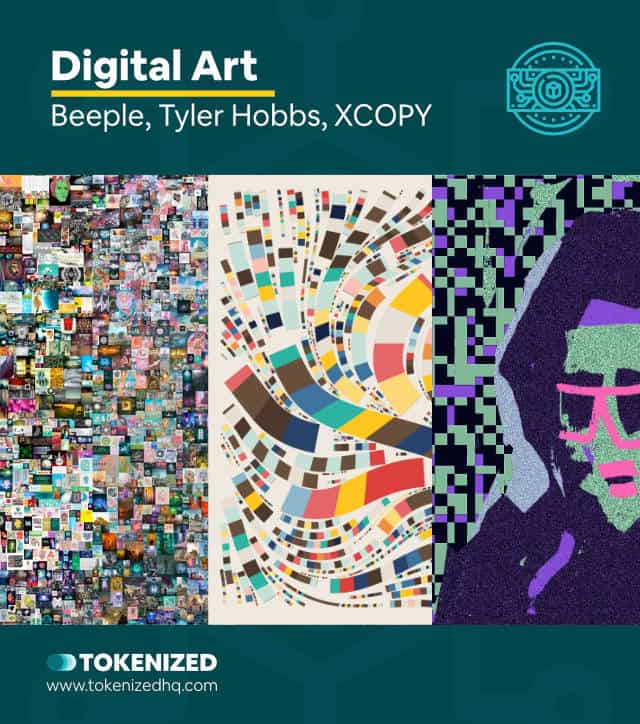
Like every new art movement, NFT art also has its own set of popular protagonists.
The most prominent example is Beeple, who became the first artist to sell an NFT via a major auction house.
Christie’s auctioned off “Everydays: The First 5000 Days” for a whopping $69 million, instantly positioning him among the top 3 most valuable living artists.
It should be noted that this piece of art is the culmination of 13 years of Beeple’s hard daily work.
Other prominent examples of NFTs of hugely successful and iconic artists include Tyler Hobbs (creator of the Fidenza collection), XCOPY (“Right-click and Save As guy“) and Pak (“The Fungible“, “Lost Poets”).
2. NFTs as Interactive Art
NFTs open up new possibilities for conceptual art which exceeds the boundaries of conventional artwork. Some NFT art is interactive by design and continues to evolve as tokens change hands.
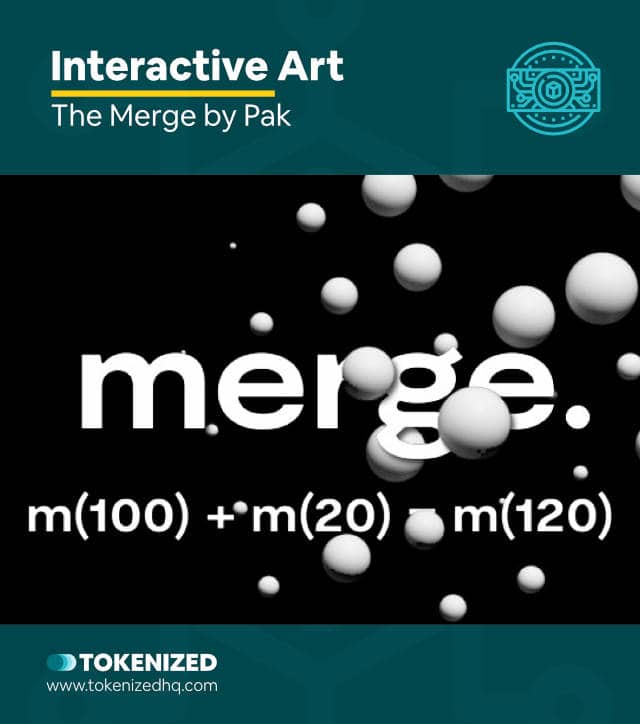
We already mentioned the anonymous artist Pak, who many believe to be a group of people rather than a single person.
Well, Pak made history in late 2021 with the release of “The Merge“, which grossed a total of $92 million on Nifty Gateway.
The artwork consisted of nearly 29,000 individual NFTs that were minted by collectors.
What makes it special is that there is an interactive element to it because collectors can accumulate more “mass” by purchasing additional tokens.
Every time an existing collector purchases another NFT from the collection, the token’s mass is merged with his existing token.
This process also “burns” one of the tokens and releases “ASH”, which is a native token within the Pak art ecosystem.
It’s unclear where all this will lead, but it’s an intriguing concept because it’s effectively a living piece of art and is one of the excellent examples of NFTs with innovative use-cases.
3. NFTs of Physical Artwork
NFTs of physical artwork are still relatively uncommon because it’s not always easy to link the physical item to a digital asset. The most prominent examples have been the fractionalization of the ownership of famous pieces of art.
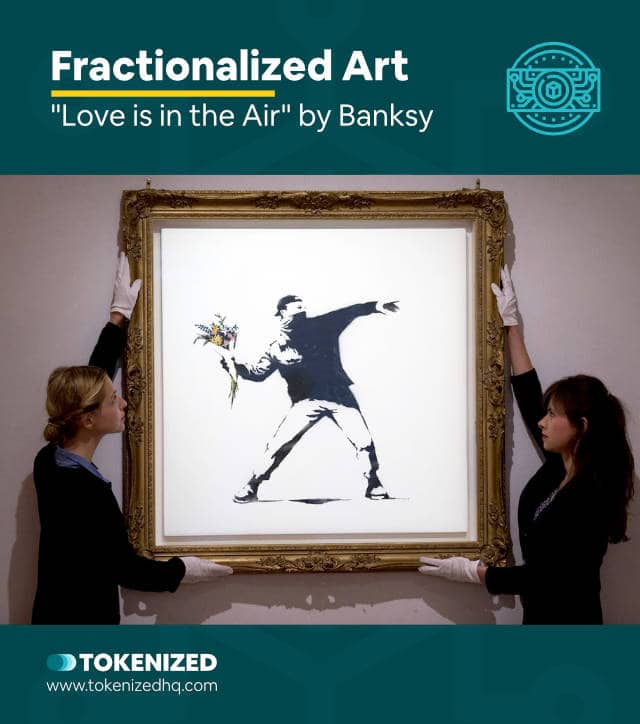
Ownership of a digital piece of art via NFTs is something that many people can still wrap their heads around.
However, when it comes to physical artwork the lines start to blur a little.
Conceptually, you could try to link proof of ownership of a physical piece of artwork to an NFT.
The problem with this idea is that most people would agree that owning the token that proves you’re the owner is ultimately worthless without the physical piece as well.
It makes sense if the intention is to prove that you own the original and actually have it in your possession.
Most people can’t afford to buy expensive artwork.
Well, that’s about to change because NFTs make it possible to fractionalize the ownership of a piece of art into thousands of individual NFTs.
These NFTs then represent a share of ownership of the underlying work of art.
This can be particularly interesting for large DAOs which pool their members’ funds in order to make significant purchases.
If you’d like to see some examples of successful DAOs, we recommend you check out our article that showcases a popular list of DAOs.
Examples of NFTs that break physical art into thousands of shares include Particle’s project to fractionalize Banksy’s “Love Is in the Air” into 10,000 NFT.
4. NFTs of Online Avatars
The most popular examples of NFTs are online avatars which represent membership in online communities. Many of these projects are striving to build popular brands, games and other businesses and are similar to early-stage startups.
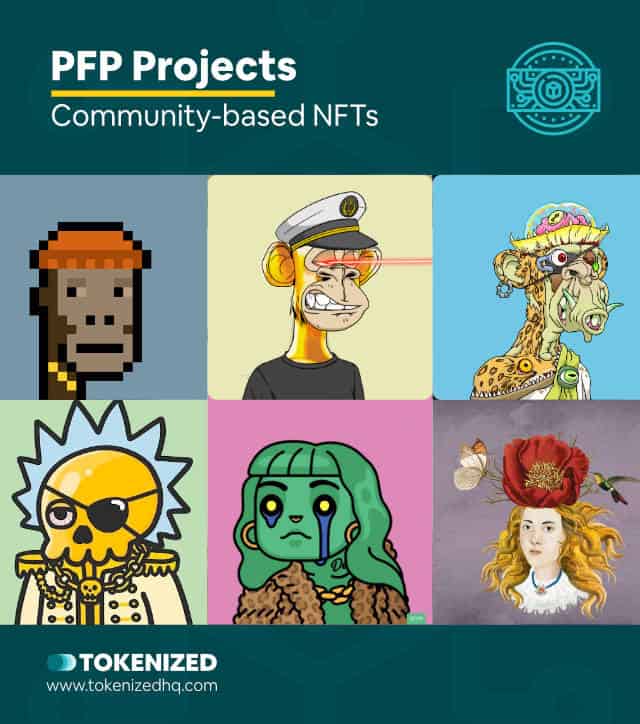
The majority of the volume that has made the NFT market size balloon in the past year comes from so-called Profile-Pic (PFP) projects.
The template project with usually 10,000 unique avatars was first popularized by the company Larva Labs which created the iconic CryptoPunks in 2017.
Since then there have literally been thousands of projects who have essentially copied the very same concept, just with different artwork.
Ever since the first NFT collection generators started popping up, the barrier to entry has dropped significantly.
Currently, the most expensive example of an NFT of such a project is the Bored Ape Yacht Club with an eye-popping floor price of 100 ETH for a single Bored Ape.
Owning an avatar within these projects doesn’t just allow you to use it as your profile picture, but it also comes with exclusive membership in the community.
What that ultimately means and whether the utility of the NFT goes beyond a simple club membership is different from one project to another.
In most cases, 10k PFP projects are being used as a funding mechanism for startups who want to create something in the digital world.
Some of them are building brands, others are developing games and most of them are still figuring out what they want to do.
5. NFTs of Moments in Time
Companies who hold the right digital rights to certain events are creating NFTs are a form of collector’s item, merchandise or memorabilia. Just like physical collector’s items, these can significantly increase in value over time.
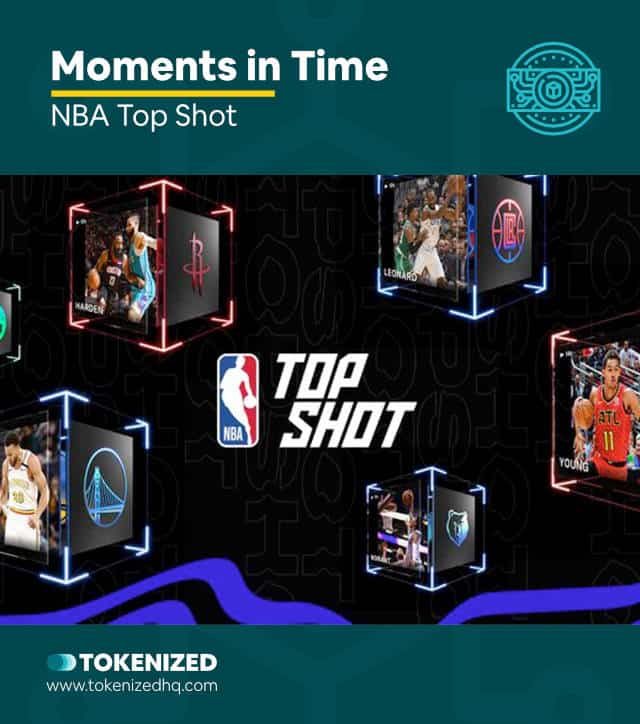
Something that has made slightly fewer headlines lately are NFTs of moments in time.
Technically these “moments” can be represented by all sorts of different things.
For example, NBA Top Shot creates video NFTs of specific moments in NBA games and fans can acquire them.
Aston Martin has experimented with something similar on the Tezos blockchain, eternalizing F1 racing moments in video NFTs.
Jack Dorsey, the founder of Twitter, also made headlines when he sold an NFT of his very first Tweet for nearly $3 million.
While some of these examples of NFTs may seem absurd to you, it’s important to remember that they can have tremendous value for the collectors who buy them.
6. NFTs of Gaming Items
Most gamers are already familiar with the concept of skins and other in-game items which have value. NFTs allow game makers to create gameplay that rewards players with items that are tradable and thus enable so-called play-to-earn games.
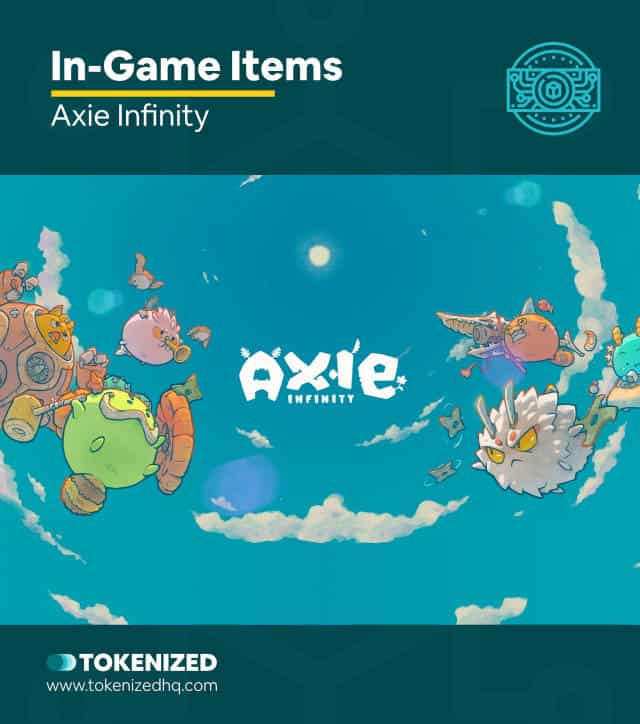
The first examples of NFT-based games included CryptoKitties which became so popular in 2017 that it completely overwhelmed the Ethereum blockchain (gas fees skyrocketed).
Although it lent a lot of elements from Pokémon cards, it was an innovative concept because the gameplay allowed you to breed new CryptoKitties.
And since each CryptoKitty had a market value, there was a strong incentive to play the game.
Today, one of the most prominent examples of NFTs used in games is Axie Infinity.
In order to play the game, you must first buy an Axie NFT.
As you progress through the game you earn points that can be used for breeding new Axies as well as other in-game activities.
There are literally dozens of NFT-based games in development and we’ve put together a list of the best NFT games in one of our articles here at Tokenized.
7. NFTs of Metaverse Real Estate
As virtual worlds start to proliferate more and more, land plots or real estate within these virtual worlds are likely to increase in value as everyone scrambles to seize their piece of these worlds.
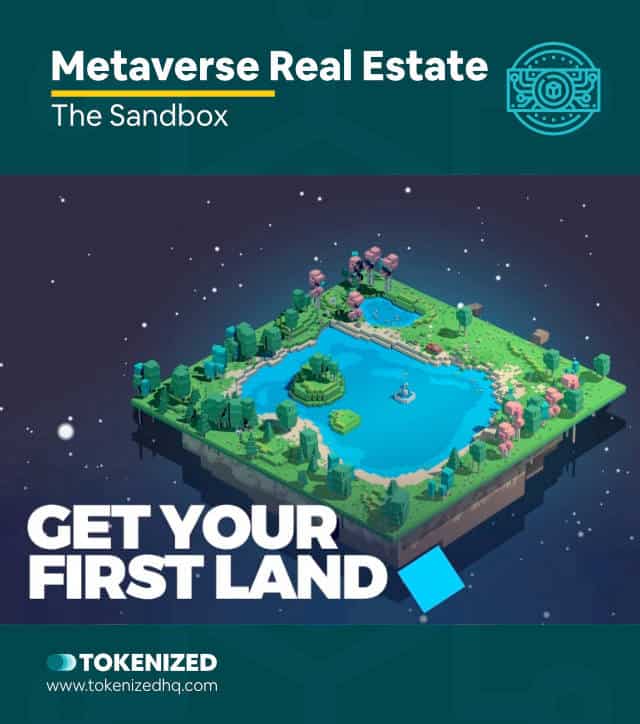
That’s right, you can acquire digital real estate in the metaverse.
Let’s not debate whether the metaverse is good or bad, or whether it will even be relevant in near future.
The fact of the matter is that companies such as Decentraland or the Sandbox allow you to purchase plots of land within their respective virtual worlds.
Whether such investments make sense or not is up to the market to decide.
But they are excellent examples of NFTs which aren’t just some weird JPEGs on the blockchain.
However, as it stands, these are sought-after digital assets and many of the PFP communities mentioned above are already securing their spot at the table.
We’ll see how it all pans out but one thing is for sure: Those who bought land before the gold rush are making juicy profits right now.
8. NFTs of Metaverse Fashion & Items
Metaverse fashion is a billion-dollar opportunity for the fashion industry, allowing them to seize new markets and sell items at virtually zero marginal cost of production. Humans will continue to use fashion as a form of communication, whether in the world or the metaverse.
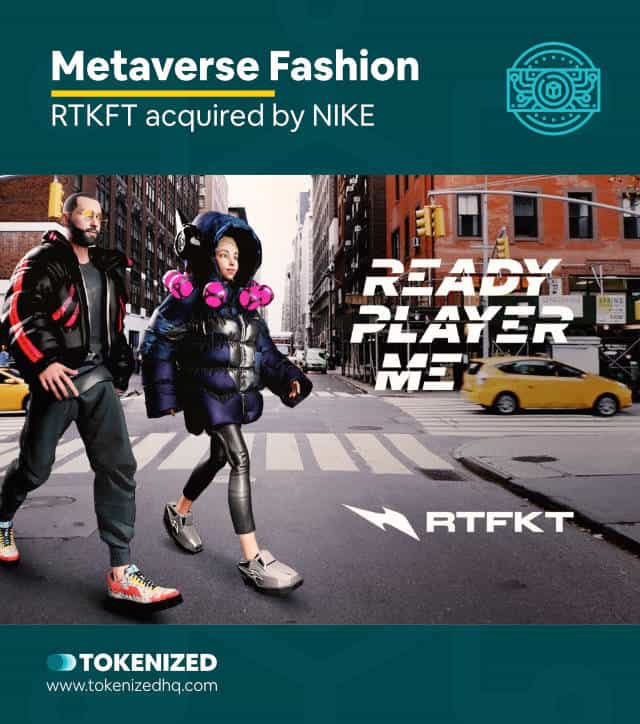
Once again, we can argue whether we like the idea of living our lives in a digital metaverse or not.
But if you at big fashion brands such as Nike, Adidas, H&M and many others, it’s becoming exceedingly obvious that they are taking NFTs very seriously.
They are betting big on the metaverse because digital fashion has the potential to become a gigantic market for them.
If you think it’s all just rubbish, then you’re a fairly old person or have no idea what kids are spending their money on already.
These aren’t made-up examples of NFTs, but very real things that you’ll probably have to come to terms with.
Millions are being spent on in-game skins and items already, with the only difference being that these items are locked within closed gaming ecosystems.
With NFTs this could change and metaverse fashion could not only become a rare item but also something you could easily sell to someone.
Big fashion brands stand to make millions with literally zero marginal costs of production.
Why do you think Nike acquired the metaverse streetwear startup RTFKT in December 2021?
9. NFTs as Access Tokens
The biggest opportunity for real utility in NFTs are access tokens. These are tokens that represent a membership or a ticket to an event. Exclusivity is an inherent aspect of NFTs which is likely to continue to grow in importance.
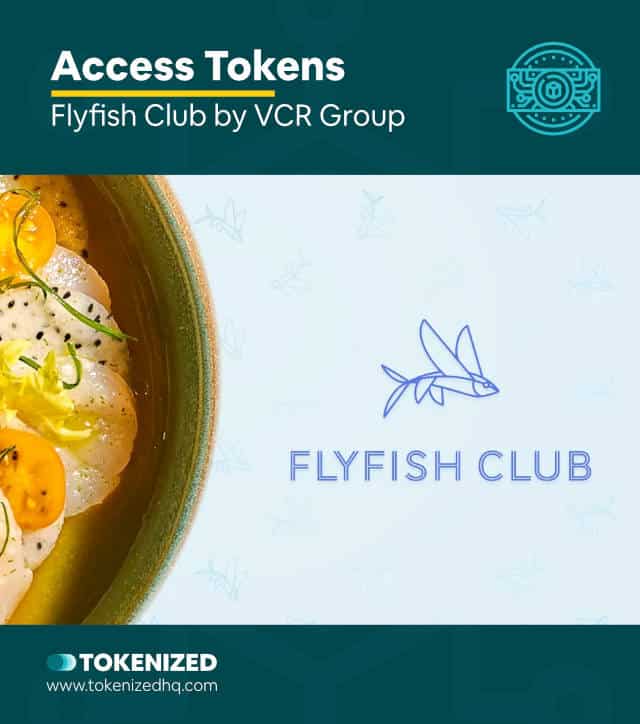
One of the biggest potential markets for NFTs are events and memberships.
Imagine you ran an exclusive country club and only holders of a member NFT have access.
Holders would not only visit the country club more often, but they would also promote it a lot more because they stand to gain if the value of the membership increases.
They could even rent their NFT to someone else for a fee via one of the platforms that already exist.
Let’s look at some examples of NFTs that already embody this concept.
VCR Group is doing exactly this with Flyfish Club, an exclusive seafood restaurant in New York City.
Or look at VeeCon, an NFT conference organized by GaryVee.
Only holders of his VeeFriends collection will receive tickets to the conference in the form of NFTs.
And those tickets also have the potential to increase in value as a collector’s item.
Concerts and sports events have the most obvious incentive to issue their tickets as NFTs.
Not only because it will ultimately make it easier to control access to events but also because tickets of historic games are already a huge collector’s item.
And let’s not forget about all the specialized content that can be gated using NFTs.
NFT podcasts for closed communities have been one of the most successful use cases in recent months.
10. NFTs as Digital Certificates
NFTs are a unique opportunity for industries to integrate verifiable data into their products. NFT certificates could not only be used to collect data but also increase the value of the physical items they are linked to.
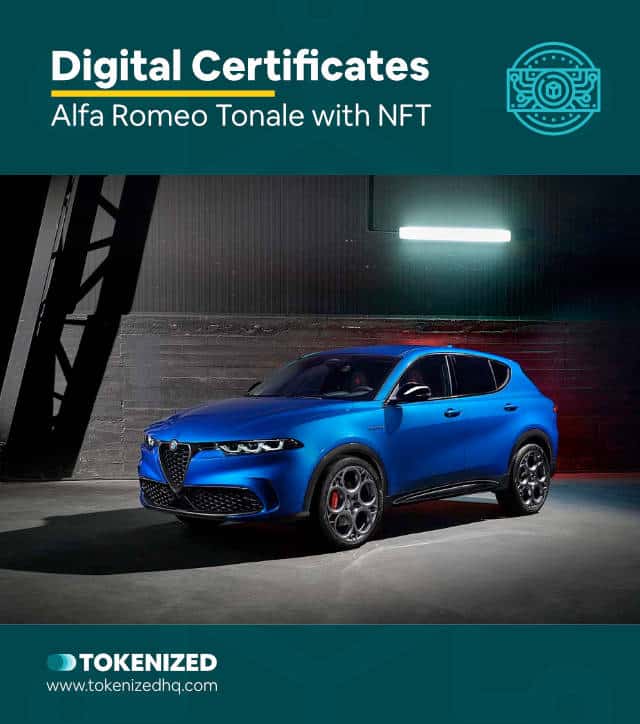
There are millions of ways how NFTs could be used as digital certificates with real-life utility.
The car industry is amongst the first to experiment which NFTs in their own real-life products and have made headlines with all sorts of examples of NFTs.
Alfa Romeo recently announced that their new electric SUV, the Alfa Romeo Tonale, will come with the world’s first car NFT as a digital certificate.
This NFT certificate will collect information on the usage of the vehicle, including its service history.
It’s an opt-in process, so anyone who doesn’t want to use it can simply ignore it.
However, chances are that if you try to re-sell the vehicle on the used car market in a few years, an NFT certificate will all the validated information might increase the value of the car.
Many other companies are exploring innovative ways to use NFTs in their products.
The next few years will most definitely be exciting.
Conclusion
These are just 10 examples of NFTs and what they might look like and how it could be used to create value for its holder.
While most of the NFTs that are making headlines might look like childish art to people unfamiliar with the technology, anyone who’s active in the space knows that there’s far more to NFTs than just simple JPEGs.
What may seem useless to many today could easily become something obviously useful in a few years.
Humans need time to adapt to the changes happening around them and this list of examples of NFTs won’t change that.
Give it time and most innovations ultimately end up becoming the most normal thing in the world.
Here at Tokenized, we want to help you learn as much as possible about the coming NFT revolution. We help you navigate this fascinating new world of non-fungible tokens and show you how you can integrate tokenization into your own business.



